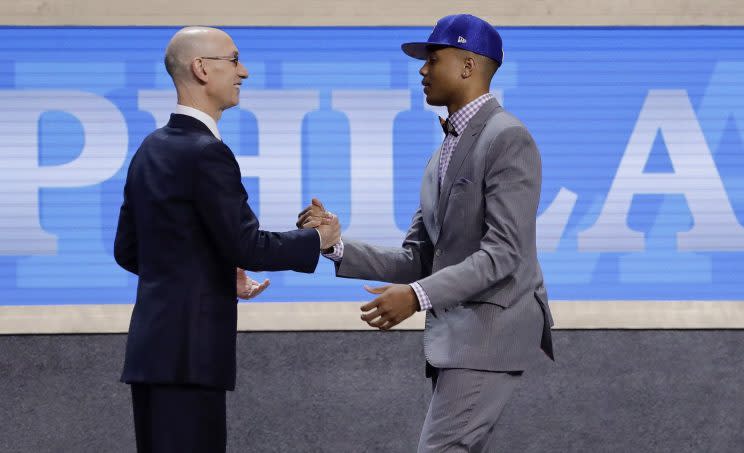NBA reduces number of timeouts in latest efforts to speed up game flow
In the NBA’s latest efforts to speed up play, the league announced Wednesday it reduced the number of timeouts per game in addition to implementing two more potential time-saving rule changes.
The NBA Board of Governors unanimously approved a reduction in the maximum number of timeouts per game from 18 to 14, according to the league’s press release. Additionally, the NBA eliminated the under-nine-minute television timeouts in the second and fourth quarters and reduced the number of timeouts allowed in both the final three minutes of regulation and overtime from three to two.
[Follow Ball Don’t Lie on social media: Twitter | Instagram | Facebook | Tumblr]
There are also no more “full” or “20-second” timeouts, which actually took 90 and 60 seconds, respectively. All timeouts are now 75 seconds, and each team enters a game with seven apiece.
Coaches from Phil Jackson to Brad Stevens have long argued for the elimination of some mandatory timeouts, but the reduction of late-game timeouts could haunt a strategist like Stevens. Still, this should help appease those fans who complain about the constant breaks in play at the end of games.
“These changes will help us fulfill our goal of improving game flow and pace of play,” NBA president of league operations Byron Spruell said in a statement. “Fewer stoppages and less time without action, especially at the end of a game, will further enhance the viewing experience for our fans.”
On top of the timeout changes, the Board of Governors also approved a pair of rules in hopes of speeding up game flow. Delay-of-game penalties will now be assessed if A) teams are not prepared to play exactly 15 minutes after the end of the second quarter or B) players step outside the 3-point line between free throws. After an initial warning, each successive penalty will result in a technical foul.
The NBA has taken smaller steps to speed up the game in recent years, urging scorekeepers to blow horns more often to prevent timeouts from running too long and implementing a 90-second clock between introductions and tipoff to cut down on pregame rituals. The league also experimented with reducing the actual game time from 48 to 44 minutes (11-minute quarters) during the 2014 preseason.
The reduction of timeouts in 2017-18 suggests the NBA is serious about addressing what commissioner Adam Silver suggested was a need to address “short attention spans,” especially among “millennials.”
"We were more focused on the pace & the flow of the game…"
Commissioner Adam Silver on reducing the number of timeouts in games. pic.twitter.com/6dYCPdNgVZ
— NBA TV (@NBATV) July 12, 2017
As with any rule change, this one does not come without concerns. The league has also made strides toward increasing rest for players, starting the season two weeks earlier than usual in an attempt to eliminate back-to-back games, and even then teams remain concerned about the grind of an 82-game schedule. By speeding up the pace of play, the NBA is also further limiting the players’ rest during games.
If you shorten the real time length of games aren't you taking in-game rest minutes away from fatigued players?
— Radiated Boartrarian (@basquiatball) July 12, 2017
Going to be interesting to see how/if fewer game stoppages affects rotations. Team with elite conditioning/depth may gain some added value.
— Couper Moorhead (@CoupNBA) July 12, 2017
Increasing the importance of depth and conditioning aren’t necessarily bad things, and rule changes are rarely met with unanimous support from executives, coaches, players and fans, but all in all, it’s hard to argue speeding up the flow of free throws and late-game scenarios is a net negative for the game.
In addition to those changes, Silver also announced in a news conference from Las Vegas on Wednesday that the season will begin on Oct. 17, and the trade deadline will be pushed up to Feb. 8.

– – – – – – –
Ben Rohrbach is a contributor for Ball Don’t Lie and Shutdown Corner on Yahoo Sports. Have a tip? Email him at rohrbach_ben@yahoo.com or follow him on Twitter! Follow @brohrbach



